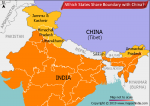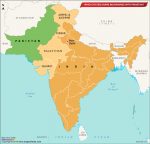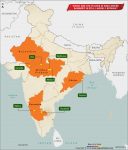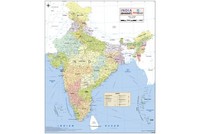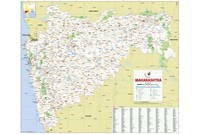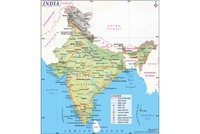A brilliant actresses known for her portrayal of strong female characters in Indian parallel cinema in the 1970s and 1980s, Smita Patil had a lot more to offer art and cinema when her life was cut short at the tragically young age of 31. But in the little over a decade that she acted in films, she left a permanent and beautiful mark on Indian film history.
Patil was born on October 17, 1955, in Pune, to Shivajirao, a politician, and Vidya. She continued her college education in Bombay after the family shifted there following her father’s appointment as a minister in the state government. In a memorable interview to Madhu Kishwar she later recalled her Bombay days: “I studied in a Marathi medium school [in Pune]. I knew no English. Then I went to Fergusson Collegein Pune. When…the family shifted to Bombay…I went through a culture shock…in ElphinstoneCollege. I felt totally out of place. We used to be called ‘the vernacs’ because we had studied in the vernacular language. I learnt English on my own . . .”
A student of Pune’s Film and Television Institute of India, she worked as a television newscaster in Doordarshan for a short while. One of her first major film roles was in Shyam Benegal’s critically acclaimed 1976 film ‘Manthan’. Set in the backdrop of the White Revolution, the film won the 1977 National Film Award for Best Feature Film in Hindi. Patil played the role of a villager who leads other women.
Recalling his association with Patil, Benegal told DNA in 2011: “I first saw Smita on TV as a Doordarshan anchor. What caught me was her distinctly Indian looks. A friend of mine knew her sister and we met. The first thing she said was, ‘I don’t want to act, so don’t offer me any role.’ I offered her one [in the film ‘Charandas Chor’] regardless, which she declined. It was her mother who persuaded her to accept.”
After ‘Manthan’, Patil became a talent to reckon with, an impression that was greatly enhanced after her convincing performance in Benegal’s 1977 film ‘Bhumika’. Based on the life of the popular 1940s Marathi actress Hansa Wadkar, it was a bold portrayal of her often elusive and some times self-destructive search for meaning and fulfillment, and won Patil the National Film Award for Best Actress. She told India Today magazine in an interview after the film’s release that it was a difficult but satisfying role. “It was frightening at first — it is a plum role which any actress would give her right hand to get — and I didn’t feel confident enough to tackle it. But I guess ultimately it is a question of having faith in one’s director — such a wonderful rapport exists between me and Shyam — I know what he wants from me and he knows how much I can give him.”
A few years later, the American critic Elliott Stein said of her: “At 25 Smita is clearly the queen of Indian parallel cinema, as much an icon for filmmakers of the milieu as was Anna Karina for young directors inFranceat the outset of their new wave. Patil is not a classic beauty but the lady glows. She never makes a false move on screen.”
Patil was initially reluctant to do commercial films. She once said that she eventually did them because she was “unceremoniously dropped from a couple of [parallel film] projects” and this affected her a lot. She worked in films like ‘Namak Halal’ and ‘Shakti’. In an interview to rediff.com in 2010 Patil’s sister Manya recalled: She [Patil] used to get very defensive when people asked her about doing so-called commercial films…She outgrew that phase and soon it was like, ‘The world cannot dictate to me...’”
Initially she was embarrassed at “mouthing corny dialogues, wearing crazy costumes and striking inane poses” but in time “she was accepted by commercial filmmakers” like Raj Khosla, Ramesh Sippy and B.R. Chopra, according to an article in 2002 in The Hindu.
In recognition of her immense talent, her work was celebrated by the French cinematheque at theLa Rochellefestival in 1984, a striking achievement for such a young actress.
Patil was cast with Shabana Azmi, the other great actress of the parallel film movement, in films like ‘Arth’ and ‘Mandi’. Patil’s ‘chilli powder’ act in Ketan Mehta’s 1985 film ‘Mirch Masala’ remains a powerful scene of Indian cinema.
In her personal life, her relationship with Raj Babbar, whom she subsequently married, created a controversy.
Smita Patil died on December 13, 1986, following complications during childbirth. Her sister, however, believes that she died of “heart break”.
“She looked for an ideal relationship, she wanted her personal life to be good, and she kept hoping things would change for the better. But they did not,” Manya said.
Patil is remembered fondly by those who knew her personally and through her films.
Benegal summed up her legacy: “How does one ever reconcile to a loss of such colossal talent?...It is sad that Smita had a relatively shorter 11-year run but look at what she did with it. Even in the projects where many felt she was miscast, you will rarely find Smita wanting when it came to her craft. I’m sure if she was around she would have continued to dazzle.”
Also on this day:
1955 — Manohar Parrikar, chief minister of Goa, was born
1960 — Daggubati Venkatesh, Telugu film actor, was born
2001 — Indian Parliament was attacked by terrorists

